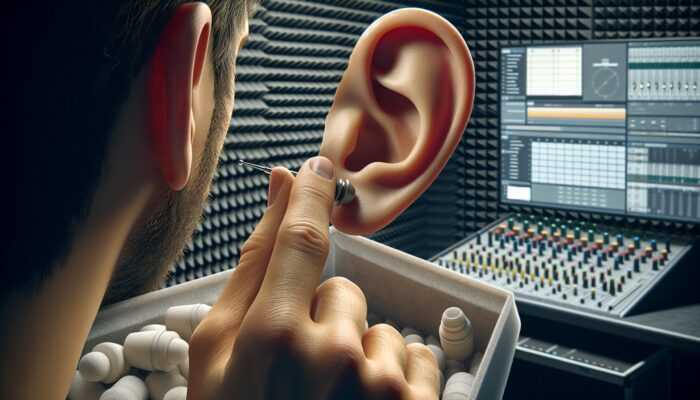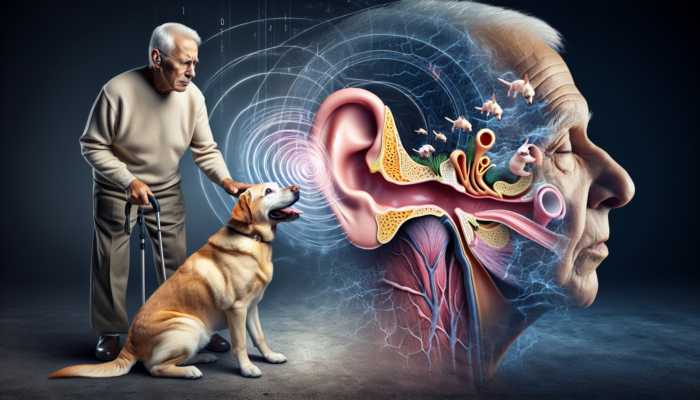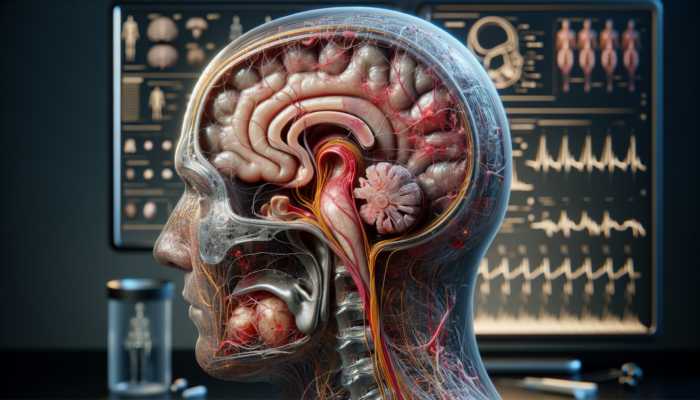Mastering Effective Communication Skills
Engaging in Role-Playing Scenarios to Understand Hearing Loss

Experiencing hearing loss through immersive simulations creates a vivid environment that allows individuals to encounter real-life communication challenges faced by those with hearing impairments. This role-playing aspect transcends mere simulation; it offers a chance to empathize with those affected, fostering a profound understanding of their daily struggles. Participants in these scenarios navigate situations that mimic real-life interactions, such as engaging in conversations in crowded venues or attempting to communicate over a phone call with subpar audio quality. By stepping into the shoes of those with hearing loss, participants can experience firsthand the emotional and practical challenges that arise in everyday communication.
The insights gained from these enriching experiences can fundamentally change how individuals perceive and approach communication. For example, one may come to understand the frustration that arises from missing segments of conversations due to background noise or the inability to catch every spoken word. This heightened awareness can shift behavior, leading to increased patience and the development of more effective strategies when engaging with hearing-impaired individuals. By recognizing these communication barriers, participants can modify their conversational approaches, ensuring that their interactions are more inclusive and effective, ultimately enriching the dialogue between all parties involved.
Furthermore, these simulations encourage a proactive mindset towards communication. Instead of waiting for misunderstandings to arise, participants learn to foresee potential challenges and address them proactively. This proactive approach encompasses asking clarifying questions, articulating thoughts clearly, and being cognizant of the surrounding environment. Consequently, role-playing scenarios do not merely enhance individual communication skills; they also foster a culture of understanding, respect, and empathy among all participants, contributing to a more inclusive community.
Implementing Active Listening Techniques for Deeper Connections
Active listening encompasses much more than simply hearing words; it requires engaging with the speaker on multiple levels. Through the lens of the benefits of hearing loss simulators, users are trained to refine their listening abilities in profound ways. By simulating the experience of hearing impairment, participants learn to focus intently on non-verbal cues, such as facial expressions and gestures, which are critical for effective communication. This newfound skill set significantly enhances their interactions with hearing-impaired individuals, allowing for deeper connections and more meaningful exchanges.
This increased attention to non-verbal communication dramatically improves interactions with those who have hearing impairments. For instance, learners may discover that a simple nod or smile can express understanding or agreement, even when words are missed. Such enlightening moments inspire individuals to become more observant and responsive during conversations, fostering a supportive and accommodating atmosphere that is beneficial for everyone involved. The ability to read these subtle cues can transform the dynamic of communication, enhancing relationships and building trust.
Additionally, participants often recognize the importance of creating environments that facilitate clear communication. This may involve minimizing background noise or ensuring that speakers maintain eye contact with listeners, thus improving opportunities for lip-reading. The empathy cultivated through these techniques not only strengthens personal connections but also contributes to a broader culture of inclusivity and support within various communities. By fostering a more attuned communication environment, individuals can significantly enhance their interactions with others, creating a more understanding society.
Transforming Speech Patterns for Enhanced Clarity
When individuals engage with the benefits of hearing loss simulators, they embark on a journey of self-discovery regarding their own speech patterns. The act of adapting how we communicate—by modifying our speech for improved clarity—can lead to transformative interactions with those who experience hearing impairments. Participants learn that adjusting their volume, pacing, and articulation can dramatically enhance comprehension, thereby creating more effective dialogues.
Consider how the clarity of one’s speech can influence understanding during crucial discussions. In professional contexts, where clear communication is vital, individuals who have participated in simulation experiences are more inclined to adopt specific strategies—such as pausing between thoughts or steering clear of idiomatic expressions—to ensure their messages are conveyed effectively. This adaptability not only aids those with hearing loss but also supports individuals who may struggle with language processing, enhancing inclusivity in various environments.
Moreover, the realization that every conversation holds significance encourages a more intentional approach to communication. Participants become increasingly aware of their audience, adjusting their communication styles to align with the needs of their conversation partners. This flexibility nurtures a sense of respect and inclusivity, transforming not only individual interactions but also the overarching communication climate across diverse settings, thus fostering a community built on mutual understanding.
Incorporating Visual Aids to Enhance Communication

Visual aids serve as a vital bridge in overcoming communication barriers for those affected by hearing loss. By integrating tools such as lip-reading and sign language, individuals can significantly enhance their interactions in meaningful ways. Engaging with the benefits of hearing loss simulators empowers participants to embrace these visual aids, enriching their communication toolkit and improving their overall effectiveness in conveying messages.
For example, acquiring basic sign language skills through simulation training can facilitate interactions that previously seemed daunting. This newfound ability not only promotes clearer communication but also conveys respect and acknowledgment of the preferred communication modalities of hearing-impaired individuals. The act of learning and utilizing sign language fosters a strong sense of connection, dismantling barriers that often hinder effective conversations.
Furthermore, participants delve into the significance of visual cues that accompany spoken language. Learning how to effectively use gestures or written messages can substantially boost comprehension levels. This approach encourages individuals to become more visually attuned, creating a more inclusive atmosphere where everyone feels valued and understood. By utilizing visual aids, communicators can ensure that their messages reach their intended audience, fostering an environment of collaboration and mutual respect.
Deepening Empathy and Awareness Surrounding Hearing Loss
Experiencing the Realities of Hearing Loss
Engaging with the benefits of hearing loss simulators provides profound insights into the everyday experiences of individuals living with hearing impairments. By simulating various levels of hearing loss, users are immersed in a world where they must navigate communication barriers, cultivating empathy and a more nuanced understanding of the challenges faced by those affected. This hands-on experience is invaluable for fostering awareness among those who may not have previously considered the daily obstacles faced by individuals with hearing loss.
Through active participation in these simulations, individuals confront situations that showcase the difficulties associated with hearing loss, such as missing vital information during conversations or struggling to keep up in group discussions. This experiential learning ignites compassion and inspires a greater sensitivity in interactions with hearing-impaired individuals. As participants walk in the shoes of those affected, they gain a clearer understanding of the emotional and social ramifications of hearing loss, which can lead to a greater advocacy for inclusivity and support.
The emotional journey undertaken through these simulations can profoundly alter perceptions about hearing loss. It challenges stereotypes and misconceptions while emphasizing that hearing impairment is not simply a technical issue, but a life-altering experience. This newfound perspective can motivate individuals to champion inclusive practices within their communities, driving meaningful change that benefits everyone and fosters a more understanding society.
Championing Inclusivity Through Simulation Training
Simulators serve as powerful instruments for promoting inclusivity by raising awareness about the nuanced experiences associated with hearing loss. Through the lens of the benefits of hearing loss simulators, participants can grasp the critical importance of cultivating environments that value diverse forms of communication. This understanding paves the way for proactive measures across various settings, from educational institutions to workplaces.
For example, organizations that prioritize inclusivity can implement training programs centered on the use of simulators. Such initiatives promote a workplace culture where all individuals are encouraged to communicate effectively, regardless of their hearing abilities. This commitment not only enhances team dynamics but also enriches the overall workplace experience, contributing to a more collaborative and supportive environment.
Community events that incorporate simulators can similarly heighten awareness about hearing loss on a larger scale. These initiatives create safe spaces for dialogue, enabling individuals to share their experiences and learn from one another. The result is a more empathetic society, equipped with the knowledge and tools necessary to support those with hearing impairments, fostering connections and community solidarity.
Encouraging Supportive Behaviors Towards Hearing-Impaired Individuals
When individuals engage with the benefits of hearing loss simulators, they become catalysts for change, cultivating supportive behaviors that significantly benefit those with hearing impairments. Understanding the complexities of hearing loss fosters a greater willingness to provide necessary accommodations, whether in personal relationships, educational settings, or public spaces. This shift in mindset is crucial for building a more inclusive society.
For instance, those who grasp the importance of clear communication may advocate for assistive technologies, such as hearing loops or captioning services, within their communities. This advocacy springs from a personal connection to the challenges of hearing loss, inspiring proactive actions that promote accessibility and support for individuals in need. By championing these technologies, they contribute to a more equitable environment for all.
Encouraging supportive behaviors also involves empowering individuals to speak out when they witness instances of exclusion or misunderstanding. Those who have undergone simulation experiences are often more inclined to advocate for the needs of hearing-impaired individuals, fostering a culture of respect, understanding, and inclusivity. This active engagement can lead to systemic changes that benefit the broader community.
Professional Training for Enhanced Understanding
Empowering Medical Staff Through Simulator Training
Healthcare professionals play a pivotal role in diagnosing and treating hearing loss, making the use of simulators an invaluable asset for their training. By engaging with the benefits of hearing loss simulators, medical staff can gain firsthand experience of the challenges encountered by individuals with hearing impairments, leading to improved patient interactions and outcomes. This experiential learning is essential for enhancing the quality of care provided.
For example, when doctors and nurses experience simulated hearing loss, they become more attuned to the necessity of clear communication during patient consultations. This heightened awareness can improve the quality of care patients receive, as healthcare providers learn to ask questions and convey information in ways that are more accessible and easily understood by those with hearing impairments. This proactive approach can significantly enhance the overall treatment experience.
Moreover, this training can cultivate a culture of empathy within healthcare settings. Medical professionals who comprehend the emotional and psychological impacts of hearing loss are more likely to approach patient care with heightened sensitivity. This can result in more thorough evaluations and personalized treatment plans that honor the unique challenges faced by individuals with hearing impairments, ultimately leading to better health outcomes and improved patient satisfaction.
Preparing Educators to Support Hearing-Impaired Students
Educators equipped with knowledge about hearing loss can greatly enhance the learning environment for students affected by such conditions. Engaging in the benefits of hearing loss simulators allows teachers to experience communication barriers firsthand, leading to the development of more effective strategies that accommodate diverse learners. This understanding is crucial for fostering an inclusive educational setting.
Imagine a classroom where teachers integrate visual aids and differentiated instruction informed by insights gained from simulation experiences. This adaptation can transform the educational experience for students with hearing impairments, promoting engagement and active participation. Furthermore, educators can create individualized education plans (IEPs) that align with the unique needs of each student, ensuring that every learner has the opportunity to succeed.
Additionally, teachers trained through simulators are likely to advocate for an inclusive classroom culture. They can instill empathy and understanding among students, ensuring that every individual feels valued and included. This proactive approach to education not only benefits students with hearing impairments but enriches the learning experience for all students, fostering a sense of community and collaboration.
Enhancing Customer Service Through Simulation Training
Customer service representatives trained using the benefits of hearing loss simulators can significantly enhance their interactions with hearing-impaired customers. This training empowers employees to empathize with the challenges faced by individuals who may struggle with auditory communication, resulting in more respectful and accommodating service. This focus on inclusivity is essential for creating a positive customer experience.
For instance, when customer service staff undergo simulation training, they gain insights into the frustrations that can arise during interactions. This understanding encourages them to adopt strategies such as speaking clearly, utilizing visual aids, or providing written information—all of which can enhance the customer experience for those with hearing impairments. By implementing these strategies, organizations can ensure that every customer feels heard and valued.
Moreover, organizations that prioritize inclusive customer service foster loyal customer bases. Individuals who feel understood and appreciated are more likely to return and recommend services to others, cultivating a positive reputation within the community. This commitment to accessibility can open new markets and establish brands as leaders in inclusivity and customer care.
Advancing Assistive Technologies for Hearing Impairments
Identifying User Needs Through Immersive Experiences
The development of effective assistive technologies hinges on a deep understanding of the specific needs of users. By leveraging the benefits of hearing loss simulators, developers can gain valuable insights into the everyday challenges faced by individuals with hearing impairments. This immersive experience allows for the creation of products that genuinely address user requirements and enhance their quality of life.
For instance, developers may realize that existing technologies often fall short in addressing the difficulties encountered in noisy environments. By experiencing these challenges firsthand, they can prioritize features that enhance clarity and usability in such settings. This user-centered approach leads to innovations that significantly improve the daily experiences of those living with hearing loss, ultimately creating more effective and user-friendly devices.
Additionally, involving users during the development process fosters a spirit of collaboration. By incorporating feedback from individuals with hearing impairments in the design and testing phases, developers can ensure their products meet real-world needs. This collaborative effort can lead to more successful outcomes and cultivate a sense of community around assistive technology, reinforcing the importance of user-centric design.
Testing and Refining Technologies for Optimal User Experience
The iterative process of testing and refining assistive technologies is crucial for delivering effective and user-friendly solutions. Utilizing the benefits of hearing loss simulators allows developers to evaluate the viability of their products in realistic scenarios. This approach enhances the overall quality of assistive devices, ensuring they cater to the diverse needs of users effectively.
During testing phases, developers can observe how individuals interact with their devices, identifying any barriers that may hinder usability. This feedback loop is vital for making necessary adjustments and optimizing features that can enhance performance. For example, a device that initially appears effective may require modifications to improve its functionality in real-life situations, ensuring that it meets the needs of its users.
Moreover, this rigorous testing process fosters innovation. By continuously refining products based on user experiences and feedback, developers can push the boundaries of what is possible in assistive technology. This commitment to improvement can lead to groundbreaking advancements that enhance accessibility and usability for individuals with hearing impairments, ultimately transforming lives for the better.
Championing Accessibility in Technology Development
Creating technologies that enhance accessibility for individuals with hearing loss demands a multifaceted approach. Engaging with the benefits of hearing loss simulators can inspire developers to prioritize inclusivity in their designs, ensuring that products are tailored to the diverse needs of users. This focus on accessibility is essential for fostering an equitable environment.
Consider how an accessible device can empower individuals to navigate their surroundings with greater confidence. By incorporating features such as adjustable settings for different hearing levels, developers can create customized solutions that enhance user experiences. This commitment to accessibility not only distinguishes products in the marketplace but also serves as a moral imperative to foster inclusivity.
Furthermore, promoting accessibility extends beyond product design. Developers can advocate for industry standards that prioritize inclusivity, influencing broader trends in technology. By leading the charge for accessible solutions, they can contribute to a more equitable society where individuals with hearing impairments have equal opportunities to thrive alongside their hearing counterparts.
Raising Public Awareness for Hearing Loss
Implementing Educational Campaigns to Foster Understanding
Public campaigns that utilize the benefits of hearing loss simulators can significantly raise awareness about the impact of hearing loss on individuals and communities alike. These initiatives act as educational platforms that inform the public, promoting understanding of the challenges faced by those with hearing impairments. Engaging the community in this manner is vital for fostering compassion and inclusivity.
For instance, organizations can host awareness events featuring interactive demonstrations using simulators. Participants can experience the challenges associated with hearing loss firsthand, fostering empathy and understanding. Such campaigns effectively communicate the need for inclusivity and encourage individuals to take proactive steps within their communities to support those affected by hearing impairments.
Moreover, educational campaigns can empower individuals with hearing loss to share their personal stories, humanizing the statistics often associated with hearing impairments. This narrative approach helps to forge a deeper connection with the public, inspiring action and driving change to support those affected by hearing loss, ultimately creating a more compassionate society.
Fostering Community Engagement through Interactive Experiences
Engaging communities with the benefits of hearing loss simulators serves as a powerful tool for raising awareness and promoting inclusion. By integrating simulators into community events, organizers can create interactive experiences that educate participants about the realities of hearing loss and its impact on everyday life.
For instance, community fairs or workshops featuring simulator experiences can attract diverse audiences. Participants can navigate scenarios that mimic the struggles faced by individuals with hearing impairments, encouraging open dialogue and awareness. This immersive approach creates a safe space for conversations, fostering understanding among community members and bridging gaps in knowledge.
Additionally, community engagement initiatives can lead to the establishment of support networks. By fostering connections between individuals with hearing impairments and those who wish to support them, communities can create environments that value inclusivity and respect. This collective effort reinforces the idea that everyone has a role in advocating for accessibility, contributing to a more unified community.
Utilizing Media and Advocacy to Amplify Awareness
Media and advocacy groups can leverage the benefits of hearing loss simulators to highlight the challenges faced by individuals with hearing impairments. By incorporating simulator experiences into their campaigns, these organizations can deliver impactful messages that resonate with the public and drive meaningful change. Raising awareness is vital for fostering a supportive environment for those affected by hearing loss.
For example, documentary films or social media campaigns featuring simulations can vividly illustrate the daily struggles of individuals with hearing loss. This storytelling approach humanizes the statistics and data often presented in discussions about hearing impairments, fostering empathy and understanding among viewers. Such narratives can create a lasting impact, inspiring action and advocacy.
Moreover, advocacy groups can call for policy changes that promote accessibility by emphasizing the insights gained from simulator experiences. By sharing these stories and insights with policymakers, advocates can effectively communicate the pressing need for inclusive practices across various settings, from education to healthcare, ultimately leading to systemic improvements.
Integrating Hearing Loss Awareness into School Programs
Integrating the benefits of hearing loss simulators into school curricula can profoundly impact students’ understanding of hearing loss and its implications. Educational institutions that embrace this approach can cultivate a culture of empathy, respect, and inclusion among students from an early age, laying the groundwork for a more compassionate future.
Classroom activities incorporating simulations enable students to experience the challenges of hearing loss firsthand, sparking discussions about communication and inclusivity. This experiential learning approach can lead to the formation of peer support networks among students, ensuring that those with hearing impairments feel valued and understood within the educational setting.
Additionally, schools can collaborate with local organizations to host awareness events featuring simulator demonstrations. These initiatives engage parents and the wider community, reinforcing the importance of inclusivity and empathy in educational contexts. By fostering awareness and compassion in schools, we set the groundwork for a more inclusive society that values diversity.
Enhancing Workplace Training for Inclusive Practices
Utilizing the benefits of hearing loss simulators in workplace training sessions can significantly elevate awareness about hearing loss and promote effective communication practices. Organizations that prioritize inclusivity create environments where all employees feel valued and supported, ultimately leading to enhanced productivity and morale.
Training programs that incorporate simulations help employees understand the challenges faced by their hearing-impaired colleagues. This firsthand experience encourages staff to adopt inclusive communication strategies, such as minimizing background noise and utilizing visual aids, thus significantly improving workplace dynamics. By fostering understanding, organizations can create a culture of collaboration and support.
Moreover, nurturing a culture of inclusion positively impacts employee morale and overall productivity. When employees feel acknowledged and supported, they are more likely to contribute to a collaborative atmosphere that values diverse perspectives. This commitment to inclusivity not only benefits individuals with hearing impairments but enriches the overall workplace culture, creating a sense of belonging for all employees.
Enhancing Safety and Emergency Response for Hearing-Impaired Individuals
Training First Responders for Effective Communication in Emergencies
Training first responders using the benefits of hearing loss simulators is essential for ensuring effective communication during emergencies. Simulating the experience of hearing impairment equips responders with the necessary skills to navigate interactions with individuals who may be unable to hear alarms or verbal instructions. This training is crucial for ensuring the safety of all community members during critical situations.
First responders who participate in this training become more sensitive to the unique challenges faced by hearing-impaired individuals in high-stress scenarios. This understanding encourages them to adopt communication strategies that enhance clarity, such as using visual signals or written instructions to convey vital information. By being better prepared, responders can ensure that everyone receives the necessary assistance during emergencies.
Furthermore, this training cultivates a culture of empathy and awareness among first responders. By experiencing the challenges of hearing loss firsthand, they approach their roles with greater sensitivity, recognizing that every second counts during emergencies. This proactive training not only enhances individual capabilities but also contributes to overall community safety, fostering a more responsive and responsible emergency response system.
Ensuring Workplace Safety for Hearing-Impaired Employees
Ensuring workplace safety for individuals with hearing loss requires an inclusive approach. Utilizing the benefits of hearing loss simulators in safety training allows employers to assess and enhance their safety protocols, ensuring they are accessible to all employees. This commitment to safety is vital for fostering a supportive work environment.
For instance, safety drills that incorporate simulations enable employees to understand the potential barriers faced by their hearing-impaired colleagues. By exploring scenarios that mimic real-life situations, employers can identify areas for improvement and implement strategies that promote inclusivity. This proactive approach ensures that all employees feel safe and supported within the workplace.
Moreover, cultivating an inclusive safety culture encourages collaboration and communication among all employees. When everyone is engaged in identifying and addressing potential barriers, workplaces become safer for all individuals, regardless of their hearing abilities. This collective effort reinforces the importance of safety and inclusivity in the workplace.
Developing Public Safety Initiatives for Inclusivity
Creating public safety measures that consider the needs of hearing-impaired individuals is essential for fostering an inclusive environment. Engaging with the benefits of hearing loss simulators can inform the design of effective safety initiatives that prioritize accessibility for all community members. This commitment to inclusivity is crucial for ensuring that everyone has equal access to safety resources.
For instance, communities can implement visual alerts for emergency systems, ensuring that individuals with hearing impairments can respond appropriately during critical situations. This proactive approach not only enhances safety but also conveys a message of inclusivity and respect for all community members. By prioritizing accessibility, communities can create environments where everyone feels secure.
Additionally, public safety campaigns can raise awareness about the unique challenges faced by hearing-impaired individuals. By providing education and resources, communities can empower individuals with hearing impairments to take an active role in their safety, fostering greater confidence and awareness. This collective effort strengthens community ties and promotes a culture of inclusivity and support for all.
Enhancing Emergency Preparedness with Evacuation Drills
Emergency evacuation drills that incorporate the benefits of hearing loss simulators can significantly improve preparedness for all individuals, especially those with hearing impairments. By experiencing simulations during drills, participants gain insights into the specific challenges faced by hearing-impaired individuals, leading to more effective evacuation strategies that cater to diverse needs.
During these drills, first responders and participants can explore tailored scenarios that address the unique requirements of hearing-impaired individuals. This proactive approach ensures that evacuation plans are inclusive and considerate of all community members, thus promoting a culture of safety and preparedness. By working together, communities can develop comprehensive plans that account for every individual’s needs.
Moreover, incorporating these simulations into emergency preparedness training fosters collaboration among participants. When individuals understand the challenges faced by their hearing-impaired colleagues, they are more likely to offer support and assistance during emergencies. This collective understanding enhances overall safety for everyone involved, reinforcing the importance of teamwork in crisis situations.
Community Awareness Programs for Safety and Support
Community awareness programs that utilize the benefits of hearing loss simulators can educate the public on how to assist individuals with hearing impairments during emergencies. By fostering understanding and empathy, these programs promote a culture of safety and support within communities, ensuring that everyone feels valued and cared for during critical situations.
For example, workshops that simulate the experience of hearing loss can empower community members to understand the challenges faced during emergencies. This knowledge can lead to more effective support strategies, such as offering assistance during evacuations or ensuring accessible communication during emergency situations. By equipping the community with essential skills, we can create a more responsive environment.
Furthermore, these awareness initiatives can build networks of support within communities. By encouraging individuals to engage with one another and share resources, communities can foster a culture of inclusivity and mutual aid that benefits all members. This collective effort reinforces the notion that everyone has a role in advocating for accessibility and support.
Advancing Research and Development in Hearing Loss
Collecting Valuable Data for Insightful Research
Engaging with the benefits of hearing loss simulators provides researchers with invaluable data about the experiences of individuals with hearing impairments. By collecting insights from simulations, researchers can deepen their understanding of hearing loss and its effects on daily life, informing future studies and interventions designed to improve the lives of those affected.
This data collection can take various forms, from surveys assessing participants’ feelings during simulations to observational studies exploring their interactions. The insights gained from these different methodologies can inform the development of new treatment approaches and technologies, ultimately improving outcomes for individuals with hearing impairments and ensuring their needs are met.
Moreover, the richness of qualitative data obtained through simulations can enhance the narrative surrounding hearing loss. By capturing personal experiences and emotions, researchers can advocate for policies and practices that prioritize inclusivity and accessibility in various settings, thereby driving change that benefits individuals with hearing impairments across the board.
Enhancing Clinical Trials with Simulator Integration
Incorporating the benefits of hearing loss simulators into clinical trials presents researchers with the opportunity to explore the efficacy of new treatments and technologies. By simulating the experiences of individuals with hearing impairments, researchers can assess how various interventions impact communication and overall quality of life, leading to more effective solutions for those in need.
For example, clinical trials involving assistive devices or therapies can be significantly enhanced by using simulators to evaluate user experiences. This integration of simulations provides valuable feedback, allowing researchers to refine their approaches and ensure they meet the needs of individuals with hearing impairments. By prioritizing user experiences, researchers can develop more effective interventions that truly make a difference.
Furthermore, these simulations foster collaboration among researchers, healthcare professionals, and individuals with hearing impairments. By engaging all stakeholders in the research process, researchers can cultivate a culture of innovation that drives advancements in hearing loss studies and treatments, ultimately benefiting the community at large.
Facilitating Collaborative Research for Greater Impact
The use of the benefits of hearing loss simulators facilitates collaboration among researchers, creating opportunities for shared data and insights in the field of hearing loss studies. By working together, researchers can amplify their impact, advancing our understanding of hearing impairments and their effects on individuals. Collaborative efforts can lead to more comprehensive solutions that address the multifaceted challenges associated with hearing loss.
Collaborative research projects that incorporate simulations can yield groundbreaking discoveries. By pooling resources and expertise, researchers can explore innovative solutions and share best practices that enhance the quality of life for individuals with hearing impairments. This collaborative spirit fosters a sense of community among researchers, enabling them to inspire one another and drive progress in the field of hearing loss studies.
Additionally, these collaborative efforts can lead to the development of standardized practices and protocols that benefit researchers and individuals with hearing impairments alike. By sharing experiences and insights gained from using simulators, researchers can enhance the overall quality of research and drive impactful change.
Driving Technology Development for Hearing Impairments
Utilizing the benefits of hearing loss simulators in technology development is essential for creating and refining new solutions designed to assist individuals with hearing impairments. By engaging with simulations, developers can gain valuable insights that inform their design processes and enhance product effectiveness. This focus on user needs is crucial for creating technologies that genuinely make a difference.
For instance, developers may uncover specific challenges faced by individuals when using existing technologies. This understanding can guide the creation of new features or modifications that enhance usability, ensuring that products meet the diverse needs of users. By prioritizing user feedback, developers can create more effective technologies that truly enhance the quality of life for individuals with hearing impairments.
Moreover, the iterative process of using simulations allows developers to refine their technologies based on user experiences. This commitment to continuous improvement not only enhances product performance but also fosters a culture of innovation that prioritizes user experience and satisfaction. By embracing feedback, developers can ensure that their solutions are both practical and impactful.
Frequently Asked Questions About Hearing Loss Simulators
What exactly are hearing loss simulators?
Hearing loss simulators are specialized devices or software applications designed to replicate the auditory experiences of individuals with hearing impairments, enabling users to better understand the challenges faced by those affected. These tools help to cultivate empathy and awareness regarding hearing loss.
How do hearing loss simulators enhance communication skills?
Hearing loss simulators improve communication skills by providing immersive experiences that allow users to navigate the challenges faced by individuals with hearing impairments, fostering understanding, empathy, and effective communication strategies.
Who stands to benefit from using hearing loss simulators?
Various professionals, including medical staff, educators, and customer service representatives, can greatly benefit from using hearing loss simulators to enhance their communication skills and improve interactions with hearing-impaired individuals.
Are hearing loss simulators effective in raising awareness about hearing loss?
Yes, hearing loss simulators are effective tools for raising awareness about hearing loss and its impact, promoting inclusive practices, and fostering empathy within communities, which is essential for creating a supportive environment.
How can schools effectively incorporate hearing loss simulators into their programs?
Schools can integrate hearing loss simulators into their curricula through interactive demonstrations, workshops, and activities designed to educate students about the challenges of hearing loss and promote understanding and empathy among peers.
What role do simulators play in professional training environments?
Simulators play a crucial role in professional training by providing realistic experiences that enhance understanding of hearing loss, improve communication skills, and foster supportive behaviors among professionals in various fields.
How do hearing loss simulators contribute to the development of assistive technologies?
Hearing loss simulators contribute to the development of assistive technologies by informing designers about user needs and preferences, leading to the creation of more effective and user-friendly devices tailored to the challenges faced by individuals with hearing impairments.
Can community programs effectively utilize hearing loss simulators?
Absolutely, community programs can effectively use hearing loss simulators to engage the public, raise awareness, and promote inclusive practices and support for individuals with hearing impairments through various outreach initiatives.
In what ways can first responders benefit from hearing loss simulator training?
First responders can greatly benefit from hearing loss simulator training by gaining insights into effective communication strategies for interacting with hearing-impaired individuals, thereby ensuring safety and proper assistance during emergencies.
What impact do hearing loss simulators have on research and development?
Hearing loss simulators significantly impact research by providing valuable data and insights that inform studies on hearing loss, helping researchers develop better treatments, technologies, and strategies for individuals with hearing impairments.
Explore our journey on X!
The post Hearing Loss Simulators: Boosting Empathy and Awareness appeared first on The Microsuction Ear Wax Removal Network.















